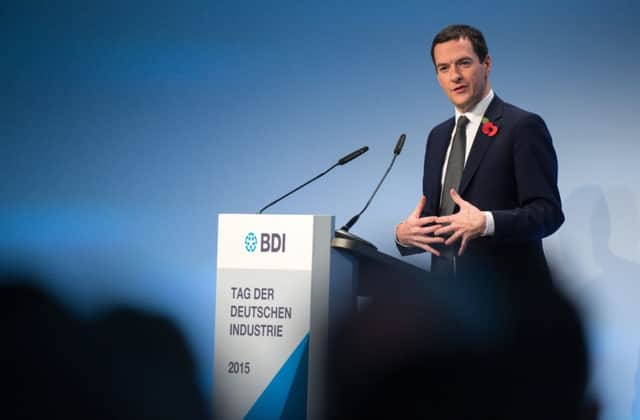Economy stuck in slow lane despite trade cheer


Official figures yesterday revealed that the nation’s goods trade gap had narrowed more than expected in September while manufacturing achieved its largest monthly increase since April 2014.
The data will provide a timely boost to Chancellor George Osborne, who is set to deliver his autumn statement later this month, although the longer-term data paints a less positive picture.
Advertisement
Hide AdAdvertisement
Hide AdAccording to initial estimates from the Office for National Statistics (ONS), Britain’s deficit on trade in goods and services was £1.6 billion lower in September than in the previous month.
However, a third-quarter shortfall of £8.5bn was still notably higher than the £5.1bn reported in the previous quarter.
David Kern, chief economist at the British Chambers of Commerce, said: “While it is good news that the trade deficit improved in September, we know that monthly figures can be erratic, and the more representative quarterly figures show a significant worsening between the second and third quarters.
“This is disappointing because it confirms our assessment that the improvement recorded in Q2 was only temporary.
“In addition to the unsustainably large trade deficit, the total current account deficit is even larger as a result of a large deficit in net income from foreign investment. We clearly need a national strategy that will help our exporters to achieve their export ambitions.”
On the manufacturing front, the estimated monthly rise of 0.8 per cent was the largest for 19 months, according to the ONS.
The strong uplift comes after several turbulent months for the sector due to weak demand from the crisis-stricken eurozone and a sharp strengthening of the pound, meaning manufacturing is still 0.4 per cent lower in the third quarter when compared to the previous three months.
Lee Hopley, chief economist at manufacturers’ organisation EEF, said the figures still provided reason for optimism.
Advertisement
Hide AdAdvertisement
Hide Ad“While manufacturing contracted in the last quarter, there are signs some parts of industry were at least mounting a comeback after a summer lull.”
Overall, total production output in Britain increased by 0.2 per cent between the second and third quarters, which is slightly lower than the 0.3 per cent growth predicted in last month’s GDP figures.
Howard Archer, chief UK and European economist at forecasting consultancy IHS Global Insight, said: “Some modest relief for UK exporters has come from the pound softening after the Bank of England indicated on Thursday that interest rates are unlikely to rise for some time to come.
“Exporters will be hoping that the pound continues to slip on reduced expectations of higher UK interest rates. Nevertheless, the export outlook currently still looks problematical.”